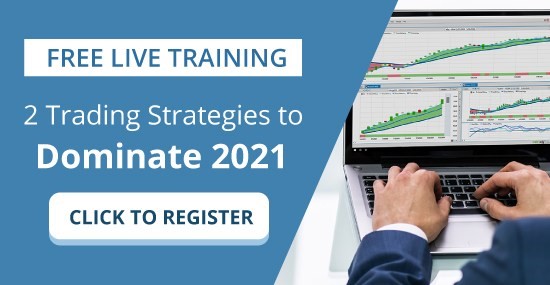
On Friday, October 22, 2021, the CEO of Square and Twitter, Jack Dorsey sent out a tweet that shook the financial establishment to its core. Dorsey warned: “Hyperinflation is going to change everything. It’s happening.”
Then a mere seven minutes later his second tweet followed: “It will happen in the US soon, and so the world.”
When a successful CEO warns about hyperinflation, it is comparable to yelling “fire” in a crowded movie theatre. Hyperinflation is “the” topic which the financial media has always refused to confront. This might be because when it has occurred in the past it is a full-fledged admission that the fiat monetary authorities’ policies have completely failed. In University Economics classes the study of Hyperinflation is rarely done. What students learn is that hyperinflation always happens somewhere else, usually in destitute nations where corruption and malfeasance has occurred.
On this blog we have written about hyperinflation and currency devaluation numerous times. Our purpose in doing so is not to be doom and gloom but to educate traders on the importance of critical thinking before they make their trading decisions. The reasons traders trade is because they are trying to protect and increase their purchasing power.
The United States has increased its Money Supply by 35% in the last 20 months. Nations who experienced hyperinflation ALWAYS have resorted to persistent use of the monetary printing press in hopes of fixing structural problems in their economies.
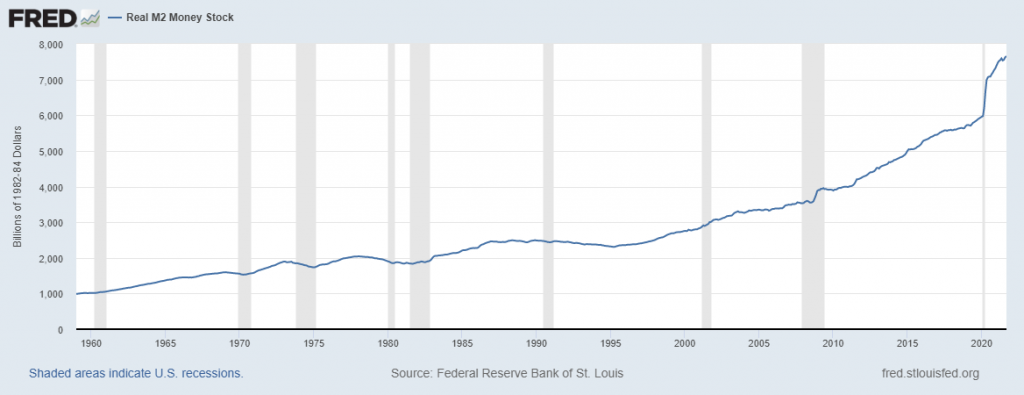
What makes the Dorsey tweet so fascinating is the very predictable response from establishment authorities who claim that it was hyperbolic or simply interested in promoting bitcoin. To be able to discuss hyperinflation intelligently we first need to clarify and agree on the important basic definitions.
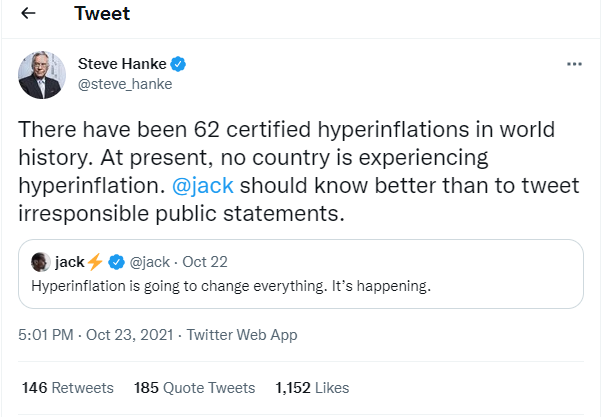
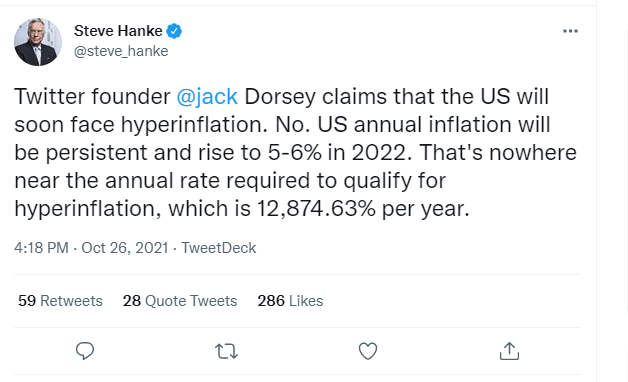
Hyperinflation is traditionally defined as the price of goods and services increasing uncontrollably for a sustained period. The technical agreed-upon threshold among economists is price increases of anywhere from 50% per month to 1,000% per year. Why 50%? That seems to be a nice round number! If you stop and think about losing 40% of your purchasing power every year, I am certain you would consider that to be highly problematic as well.
What is amusing about Professor Steve Hanke’s tweets is that a month earlier he published his inflation roundup highlighting countries that are currently being ravaged by inflation.
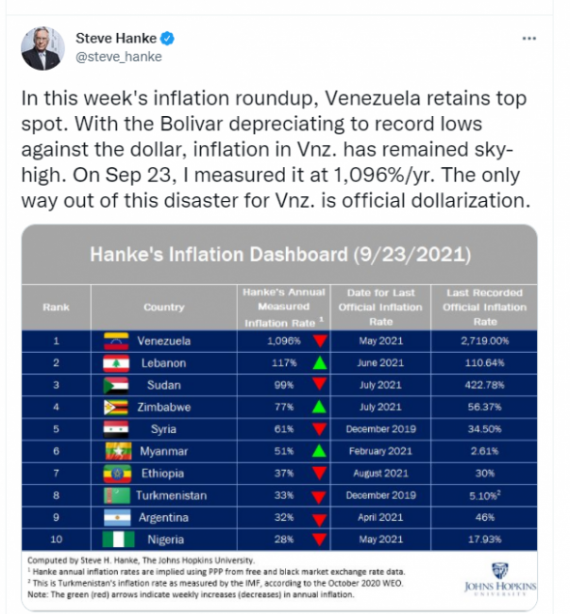
These are ten nations that are experiencing anywhere from 25% to over 1000% inflation. These nations are all experiencing a currency collapse as purchasing power of their currencies are evaporating.
These numbers should terrify anyone engaged in any aspect of finance. But the very first thing that becomes clear when we discuss this topic is that governments and monetary authorities do not use the same units of measurement consistently.
Most recently the Consumer Price Index (CPI) which is published every month shows that Inflation in the United States is running at 5.4%. If you can remember the conversations that monetary authorities published over the past year, Fed Chair, Jerome Powell stated that he predicted inflation for 2021 at 1.8% to 2% for 2021. Everyone can see that the recently published statistics are 200% higher than what we were told. But that is not the problem. The problem at the core of all economic discussions is the basket of goods that is used to measure inflation is always changing and remains a moving target.
If you were to measure inflation, you’d track the cost of a basket of goods from one year to the next, subtract the two, and measure the difference. That was how inflation was officially measured right on up through the early 1980s. The CPI was an official Cost of Goods Index.
But in 1996, the Clinton Administration implemented the Boskin Commission findings, which championed the use of several new statistical tools – substitution, weighting, and hedonics—that are applied to prices after they’re collected but before they’re reported. And to complicate matters even further, they remove the cost of food, energy, and healthcare. So, the result is the Consumer Price Index value is a highly politicized number which only tells you a very one sided and manipulated story. I can assure you that most in the financial media are completely unaware of how the Consumer Price Index is measured and calculated. Yet, the number becomes headline news that talking heads parrot back and forth amongst themselves.
Homes in the last year are up 23%!
Gasoline in the past year is up over 100%
Use Car prices are up over 37% year over year.
Food prices will vary from region to region, but I notice at least a 15% to 20% increase in my food budget from a year ago.
Lumber prices have fallen recently but it is still up 300% from a year ago.
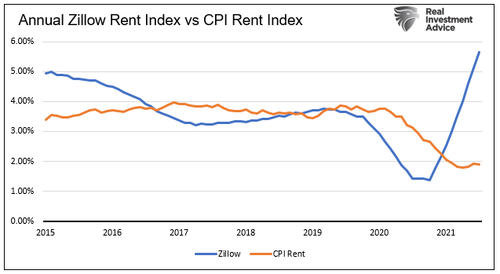
Meanwhile government figures tell us that apartment rents are only increasing at 2% annually. Rents according to Apartment.com and Zillow are up 9% to 13%. Who are you going to trust?
The government is using 32,000 units that they survey every 6 months and Zillow is using 100 million units that they evaluate every month. Who do you think is going to be more accurate?
The only value that the CPI offers is that it provides a benchmark that you can compare to what U.S. Treasury Bonds and Notes are yielding. This value is referred to as the Real Rate of Return and is the metric that professionals use to define monetary safety. Currently the 10-year Note is yielding 1.7% and the CPI is saying inflation is at 5.4%. The difference between the two values tells you that if a saver wanting to save money invests in US Notes they will lose -3.7% a year. That is the current monetary safety benchmark! When you are guaranteed a loss of purchasing power by playing it safe you know that something is not right with current economic and monetary policies. The question that all traders, investors, and retirees need to be asking themselves is:
Where does scared money run to when the safety net has been decimated?
Critics of Dorsey’s tweet were quick to point out that 5.4% CPI is not the 50% threshold needed to categorize something as hyperinflation. But there is something deeper at stake here. Jack Dorsey as the CEO of Square which is a $100 billion dollar company has access to millions of product SKUs from all over the world on millions of companies. His company can see exactly how much a product was selling for a year ago and how much the same product costs today. He can see that domestically and internationally. Square can see how currency devaluations devastate one country lower in the fiat hierarchy that you and I are unaware of.
So, quite literally, Dorsey and Square is sitting on one of the most robust data sets in the world to measure all the multi-dimensional points of transactional finance and inflation in the world.
Regardless, Dorsey was pummeled as an “idiot” for his commentary on hyperinflation by all the traditional establishment authorities.
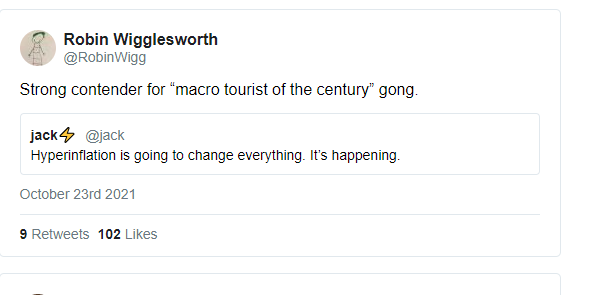
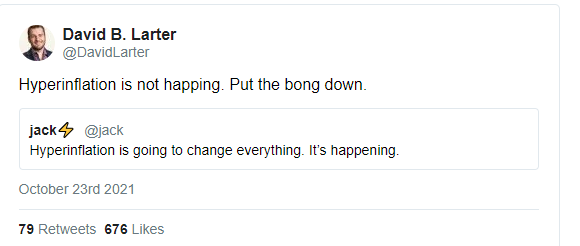

Square is a $100 billion company and has a product suite which is engaged in all aspects of merchant processing and financing. It also has CashApp, Square Payroll, Square Reader, Square Register, Afterpay (Buy Now- Pay Later) as well as Square financing. Through these different contact points in the world of finance it has billions of data points that make up its dataset comprised of over 30 million active CashApp users.
Dorsey can see the supply chain disruptions occurring in real time. Common sense will also tell you that if the government pays people $6 trillion over the last 20 months, to stay at home and not produce any goods, you have created a situation of too much money chasing too few goods. Traditionally this is how massive inflations always begin.
My point here is to call your attention to the difference in datasets between the Bureau of Labor Statistics Consumer Price Index which is a complete charade and a fintech merchant who sees billions of data points real time price movement without a political agenda. You make the call. Who are you going to trust? After all it is your purchasing power at stake! If the CPI was not so highly politicized, you would think the government would ask and benefit from the real time data that fintech companies use to help them determine inflation.
I don’t know specifically what data points Mr. Dorsey is referencing. But I do know for certain the CPI number that is published by the Bureau of Labor Statistics serves absolutely no useful purpose at all and has no semblance to economic reality. Every month the CPI is published to much publicity and fanfare but in terms of usefulness – it offers none!
The reason that prices are going up is because the value of the currency is going down.
This is such a touchy topic because when a currency is decreasing in value, citizens will purchase any good they can afford to get out of cash. This becomes a vicious cycle where people quickly rush to acquire more goods because the goods hold their value better than the paper money. Look at any country that is ravaged by inflation and you will find a citizenry that is distrustful of government because they have seen their money evaporate right before their eyes. The inflation occurs always because the currency is being debased at the money printer.
As an investor and trader, how do you go about making sense of it all?
As a trader, the most important question on your mind is “How do I protect the purchasing power of my portfolio?”.
Finding value is becoming a completely consuming activity on the part of traders and investors. The target moves quickly based upon too many factors that remain unseen to the naked eye.
It’s all about getting on the right side, of the right trend at the right time.
Great trading is not about siding with Mr. Dorsey or the Bureau of Labor Statistics. It is only about having a reliable, repeatable process for finding great trends.
Most traders have problems with the timing of their trades.
If you want to win, it’s all about who has the best tools. Artificial intelligence excels at keeping traders on the right side of the right trend at the right time.
Let’s get candid here:
- The market is brutally honest – there are winners and losers.
- It’s very black and white.
- If you need a friend, get a dog.
- If you are going to win, someone else must lose.
- If survival of the fittest makes you uneasy, stay out of the financial markets.
We live in unique times. The Printing Press is diluting the value of our money.
Everyone is aware if the money supply grows 30% you must grow your portfolio by that amount just to break even when you look at your purchasing power.
Since artificial intelligence has beaten humans in Poker, Chess, Jeopardy and Go! do you really think trading is any different?
How do you think your investment portfolio compares when pitted against artificial intelligence?
Are you capable of finding those markets with the best risk/reward ratios out of the thousands of trading opportunities that exist?
Knowledge. Useful knowledge. And its application is what A.I. delivers.
You should find out. Join us for a FREE, Live Training. We’ll show you at least three stocks that have been identified by the A.I. that are poised for big movement… and remember, movement of any kind is an opportunity for profits!
Discover why Vantagepoint’s artificial intelligence is the solution professional traders go-to for less risk, more rewards, and guaranteed peace of mind.
Visit with us and check out the A.I. at our Next Live Training.
It’s not magic. It’s machine learning.
Make it count.
IMPORTANT NOTICE!
THERE IS SUBSTANTIAL RISK OF LOSS ASSOCIATED WITH TRADING. ONLY RISK CAPITAL SHOULD BE USED TO TRADE. TRADING STOCKS, FUTURES, OPTIONS, FOREX, AND ETFs IS NOT SUITABLE FOR EVERYONE.
DISCLAIMER: STOCKS, FUTURES, OPTIONS, ETFs AND CURRENCY TRADING ALL HAVE LARGE POTENTIAL REWARDS, BUT THEY ALSO HAVE LARGE POTENTIAL RISK. YOU MUST BE AWARE OF THE RISKS AND BE WILLING TO ACCEPT THEM IN ORDER TO INVEST IN THESE MARKETS. DON’T TRADE WITH MONEY YOU CAN’T AFFORD TO LOSE. THIS ARTICLE AND WEBSITE IS NEITHER A SOLICITATION NOR AN OFFER TO BUY/SELL FUTURES, OPTIONS, STOCKS, OR CURRENCIES. NO REPRESENTATION IS BEING MADE THAT ANY ACCOUNT WILL OR IS LIKELY TO ACHIEVE PROFITS OR LOSSES SIMILAR TO THOSE DISCUSSED ON THIS ARTICLE OR WEBSITE. THE PAST PERFORMANCE OF ANY TRADING SYSTEM OR METHODOLOGY IS NOT NECESSARILY INDICATIVE OF FUTURE RESULTS. CFTC RULE 4.41 – HYPOTHETICAL OR SIMULATED PERFORMANCE RESULTS HAVE CERTAIN LIMITATIONS. UNLIKE AN ACTUAL PERFORMANCE RECORD, SIMULATED RESULTS DO NOT REPRESENT ACTUAL TRADING. ALSO, SINCE THE TRADES HAVE NOT BEEN EXECUTED, THE RESULTS MAY HAVE UNDER-OR-OVER COMPENSATED FOR THE IMPACT, IF ANY, OF CERTAIN MARKET FACTORS, SUCH AS LACK OF LIQUIDITY. SIMULATED TRADING PROGRAMS IN GENERAL ARE ALSO SUBJECT TO THE FACT THAT THEY ARE DESIGNED WITH THE BENEFIT OF HINDSIGHT. NO REPRESENTATION IS BEING MADE THAT ANY ACCOUNT WILL OR IS LIKELY TO ACHIEVE PROFIT OR LOSSES SIMILAR TO THOSE SHOWN.


